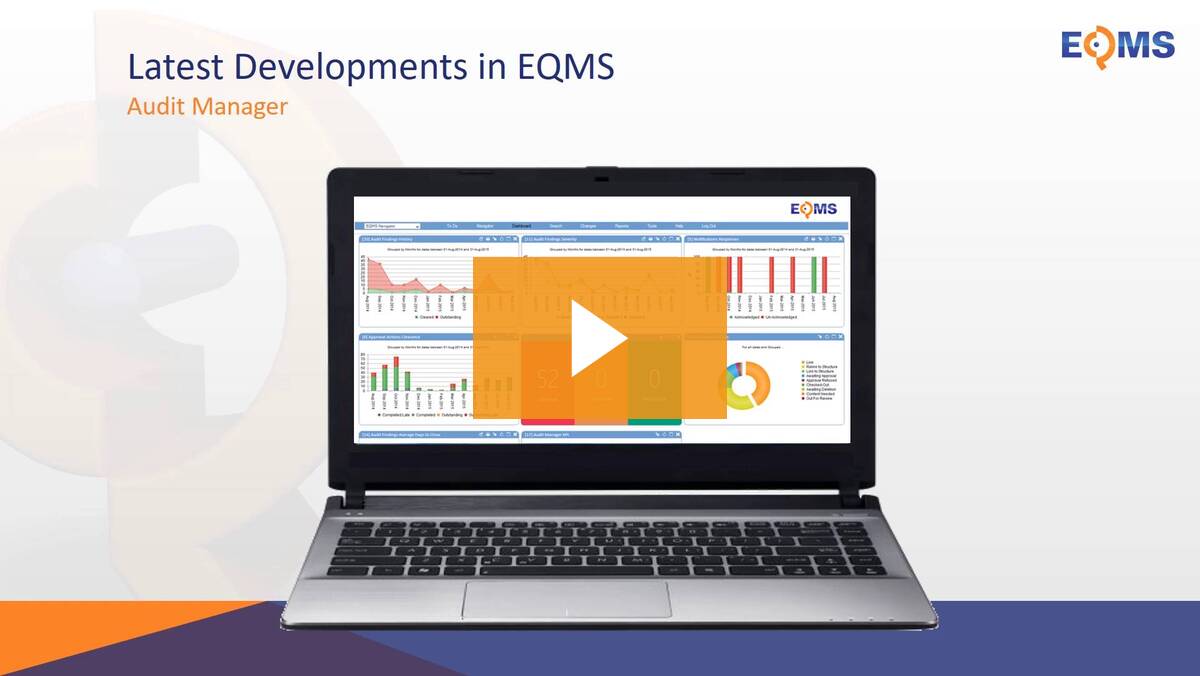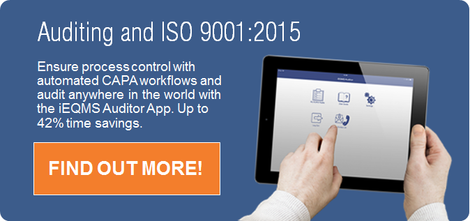Want to contribute to this article?
Improvement is a huge part of everything we do at Qualsys. It's in our culture. We're constantly improving as a business and as people, and we're always aiming to provide products and services that meet the highest possible standards.
We never stop developing and refining the functionality of our EQMS software. Recently we've made a host of improvements to our Audit Manager module, and we've put together a short video to introduce them to you.
Watch this five-minute video, hosted by Declan Webster, one of our Service Implementation Managers, or read the full transcript that follows.

Transcript
Hello and welcome to the latest video on EQMS by Qualsys. I know you're all busy people so I’ll aim to keep the agenda nice and short. I’ll begin by talking about some of Audit Manager’s functions, and then I’ll take you through a few of the module’s practical uses. Then I’ll use the rest of the session to show you some of Audit Manager’s new features in more detail.
So to start off, what does Audit Manager allow you to do?
It allows you to schedule and plan your audits and inspections quickly and easily, and gives you a calendar view of your entire programme, filtered how you want. It can check an auditor’s availability before it assigns them responsibility for carrying out an audit, and it can notify those being audited that they have an audit looming. If you want to set milestone dates, or have audits that automatically recur after a set period of time, then the module can do all that for you as well.
Questions in Audit Manager are arranged into checklists. You can specify what type of response you need for each question. For example, it could be a date, a number, a selection from a drop-down list or simply a text field. You can make questions mandatory or optional, and you can determine which checklists apply to which type of audit.
It can automate corrective and preventive action by setting deadlines for tasks to be completed and triggering escalation to senior managers when issues are still to be resolved. It can assign as many actions as you need, to as many users as you need, so problems or potential problems are always identified and dealt with. And it can generate automated messages or emails to alert people when they need to take action.
It allows you to control security permissions for your audit records so responsibilities are clearly defined and records can’t be tampered with. You can restrict viewing to certain users or groups of users, or by audit type. You can enforce settings so auditors have read/write access to the appropriate records. And you can define your audit managers – in other words, those people who manage all audit activity for their area of responsibility – and set administrator privileges.
Like all our EQMS modules, we’ve built Audit Manager to be customisable and allow for a range of uses. Probably the most common use is the internal quality audit, where it helps avoid duplication of effort and allows much clearer and comprehensive data to be recorded.
A lot of clients also find it invaluable for their safety inspections, where it can be used to keep a full, detailed record of all safety activity.
But it’s not just handy for audits. Some of our clients use Audit Manager when new employees join the business, to keep track of paperwork, safety certificates, inductions and access to systems.
And those of our clients working in heavily regulated environments such as labs or medical device manufacturing facilities like to use the module to plan, schedule and carry out their cleaning reviews.
And now on to some of the latest features for Audit Manager.
First off, we have a new report, 494, which includes details of all questions, answers, comments, findings and more. The report adopts a similar style to many of the newer reports in the other EQMS modules, giving you the ability to rearrange, sort and filter the data to your requirements.
You can also save the filters and arrangement you apply to be able to retrieve a new report in the same format at a later date. Additionally, you can export to Microsoft Excel.
Another new feature is this small quality of life enhancement, deleting unrequired checklists. This can save a lot of time when making changes to new audits that use an existing template. Instead of having to remove each section separately, you can now remove the whole checklist in one action.
One of the biggest new features for Audit Manager is the .ICS Outlook integration. Email notifications sent out by the system regarding scheduling audits in EQMS now contain an attached .ics file. When the .ics file is opened in Microsoft Outlook it'll create an entry in your default Outlook calendar. When rescheduling, the notification email will also include an updated .ics file.
And the last new feature that I'd like to talk to you about today is the Auto-Start Audit. If enabled at an Audit Type level, required audits will automatically be updated from 'Planned' or 'Scheduled' to 'Ongoing' when the start date is reached. This ensures it's readily available for auditors to carry out the audit via the app or their web browser without the need for an administrator to update the status manually.
What you should do now
Our iEQMS Auditor app for iPad makes the entire audit process – planning, producing reports and following up actions – far more efficient and effective. Click the image below to request a demonstration.








Share your thoughts on this article